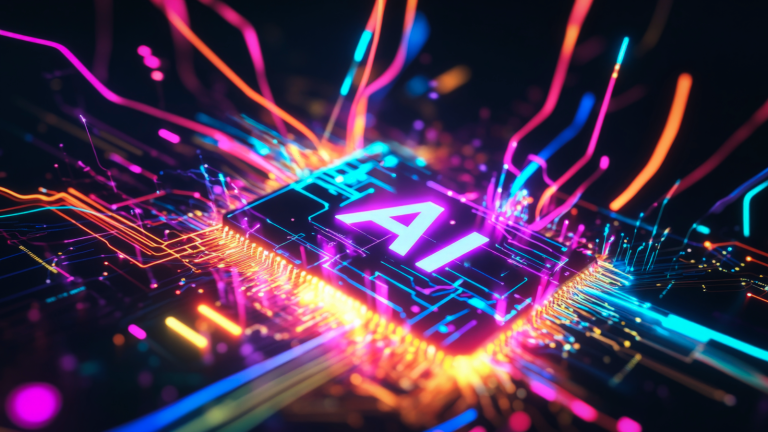The AI industry is undergoing a transformation of sorts right now: one that could define the stock market winners – and losers – for the rest of the year and beyond.
That is, the AI model-making process is undergoing a seismic shift from training to inferencing.
In short, it’s pivoting away from the gluttonous obsession with training giant omniscient models. Now it’s rushing headlong into a new era, where inferencing – when models make decisions based on new, unseen data – takes center stage.
This may sound nuanced and technical in nature; and to some degree, it is. (Don’t worry: we’ll get into these details more below.)
But nonetheless, it will transform how hundreds of billions of dollars are spent, even this year alone, on new AI infrastructure.
It means the bulk of that money will stop flowing into the stuff that assists AI training… and start flowing toward what boosts model inferencing.
🚨 Translation for investors: This is the moment to pay attention to because a new class of AI stock winners is about to emerge…
AI Training Fueled the Boom’s First Phase, But That Era Is Ending
Let’s start with the basics here.
Essentially, AI training is exactly what it sounds like. It’s the process of teaching a model what to know. Think of it like putting a bunch of professionals in a room with every book ever written and having them memorize it all, in case someone, somewhere asks them a question about it someday.
And until this point in the AI boom, training has been the star of the show. Companies like OpenAI, Alphabet (GOOGL), and Meta (META) have spent hundreds of millions – sometimes billions – training large language models.
Nvidia (NVDA) has made a killing selling its monster GPUs (A100, H100, Blackwell, etc.) to power this training frenzy, with nearly 90% of revenue now tied to the data‑center segment and year-over-year growth often exceeding 90%.
And the company isn’t shy about what’s driving the boom – or where it’s headed next.
As CEO Jensen Huang touted recently:
“The world’s most powerful data centers are being built right now, and they’re being built for training AI models that will change everything.”
No argument there, Jensen. Training did change everything.
Yet, that was just the first phase of this new era…
AI Inferencing Takes the Lead: Faster, Smarter, Cheaper
After all that extensive training, these models put that knowledge into practice.
Every time you ask ChatGPT a question… an autonomous Tesla makes a driving decision… or Meta’s AI filters your social media feed, that’s inferencing.
And thanks to breakthroughs like DeepSeek’s earlier this year, inferencing is stealing the spotlight. Such fine-tuned lightweight models can outperform larger general-purpose models in practical applications, especially when it comes to responsiveness, context handling, and personalization – drastically reducing the cost of deploying useful AI.
Researchers are learning that you don’t need to create an AI model that knows everything – you just need an AI model that knows how to infer things to get to the right answer in real-time.
As the old saying goes; you want to teach someone how to think, not what to think.
That’s the shift going on in model-making right now.
AI doesn’t have to know all the answers – it just needs the skills to find them.
Indeed, as Nvidia’s Huang said:
“The future of AI isn’t just about building models. It’s about how fast, how cheap, and how smartly you can serve them at scale.”
OpenAI’s Sam Altman made a similar remark during a spring tech event:
“We’ve entered the phase where inference efficiency is the battleground. That’s where AI becomes universal.”
For investors, that means the big bucks are now shifting from model-building to model-serving.
Why AI Inferencing Will Reshape the Infrastructure Investment Landscape
This is where it gets interesting (and profitable).
The difference between training and inferencing isn’t just technical. It activates totally different parts of the AI supply chain.
The training process requires super-powerful GPUs (as with NVIDIA H100 or Blackwell B200) and massive data centers with top-of-the-line cooling, power, and networking. Robust memory is also a must; and as such, high-bandwidth memory demand is off the charts. Suppliers like Micron (MU) and Samsung are battling to meet demand amid ongoing shortages.
But inferencing uses different, more specialized chips designed for speed and efficiency (like NVIDIA L4, AWS Inferentia, Qualcomm edge AI, AMD MI300). It’s also typically deployed in lighter clusters with more edge devices (phones, cars, cameras using AI locally) and is less memory-intensive. (In other words, it doesn’t have to juggle giant data sets, just the trained model and your input). When it comes to inferencing, researchers prioritize low cost per query and low latency.
The economic implications here? Industry leaders will keep pouring money into AI infrastructure. But increasingly, that cash will flow to different parts of the supply chain as more models achieve inferencing.
Here’s where we see the action heading…
The Stocks Poised to Lead the AI Inferencing Boom
Nvidia will likely remain king because it owns the best inference chips and the software ecosystem (TensorRT, CUDA) that optimizes inference at scale. Its TensorRT enables developers to accelerate inferencing by optimizing models for deployment, drastically reducing latency and energy use. This makes it pretty indispensable for commercial applications like chatbots, recommendation engines, and vision systems.
But Amazon (AMZN) could also quietly emerge as a leading chip supplier in the inferencing era. With its Inferentia and Trainium chips, AWS is determined to serve its customers AI cheaply. And guess who has the most customers doing AI inferencing? Good, ole’ Amazon.
So far, Advanced Micro Devices (AMD) has been a disappointing performer in the AI Boom. But its MI300 chips are making real inroads in inference workloads; for example, its MI300X boasts 192GB of high-bandwidth memory compared to the 80GB in NVIDIA’s H100, which is ideal for LLMs. This phase shift could be key to AMD’s comeback story.
Inferencing at scale also means data centers have to work at lightning speed. And since their networking gear is the spine of this infrastructure, Arista Networks (ANET) and Cisco (CSCO) should benefit from that.
Broadcom (AVGO) also stands out as a potential winner in the shift to inferencing. It offers custom inference accelerator components (e.g., parts of Google TPUs), switch ASICs, and networking components – a broad winner.
Astera Labs (ALAB) looks poised to benefit as well. Its connectivity chips are the glue between AI accelerators, CPUs, and memory, essential for scaling inference clusters. Qualcomm (QCOM) could win, too, because it dominates inferencing at the edge through phones, autos, and IoT. And Vertiv (VRT) should stay strong because all these inference servers still need power, cooling, and racks. It seems the company would profit from every expansion.
This shift is quickly reshaping the competitive landscape – and opening the door for a fresh wave of tech players to lead the charge.
The Final Word on Uncovering Tomorrow’s AI Stock Leaders
This move from training to inferencing doesn’t mark the end of the AI Boom – just the next stage of its evolution.
AI is maturing. We’ve built the models. Now we’re figuring out how to deploy them efficiently, serve them to billions of users, and seamlessly integrate them into daily life.
And the investors who get positioned for this shift early will ride the next wave of AI wealth creation.
The focus is shifting, the winners are changing, and the opportunity is bigger than ever.
So, as inferencing moves to center stage, ask yourself: Are you holding yesterday’s AI winners – or tomorrow’s?
We think the biggest AI stock winners of the next few years will come from a sector driven by powerful inferencing. It’s one that Elon Musk is obsessed with… that President Trump has recently shown interest in… one that even the late, great Steve Jobs wanted to bring to fruition; his ‘Final Vision.’
Jobs was one of the most successful and innovative tech visionaries of our time. He was known for his impressive ability to ‘see around corners.’ And while he may have been early to the party during his lifetime, a different innovator – Tesla’s Elon Musk – has picked up his old torch and is bringing Jobs’ dream to life.
We’re confident that this niche of the AI industry will transition from obscurity to ubiquity over the next few years. As it does, the stocks at the epicenter of this niche could become 10X winners.
And with a major announcement slated for July 21, Musk may be about to hit the gas in a big way. That’s why we just held an urgent briefing all about this ‘Final Vision’ and how to get positioned for the potentially massive profits to come.


